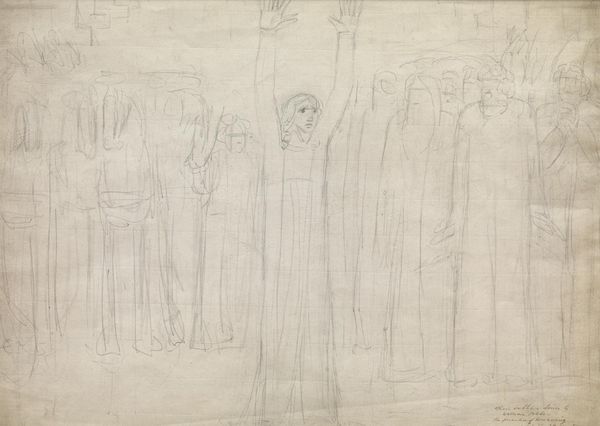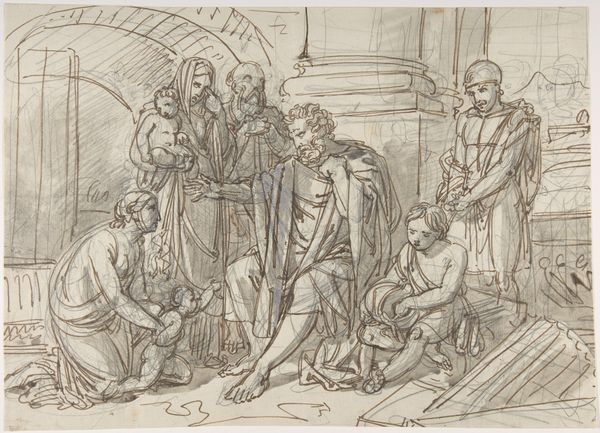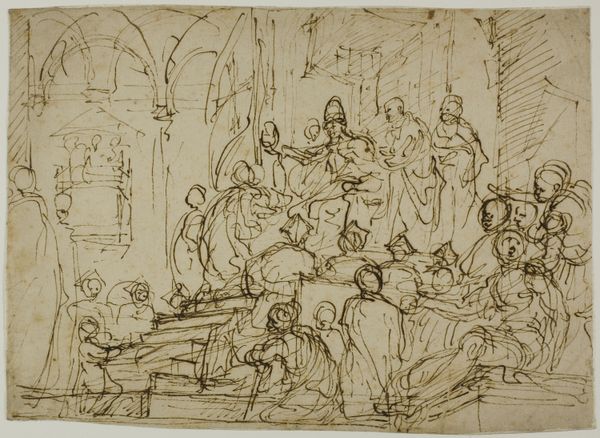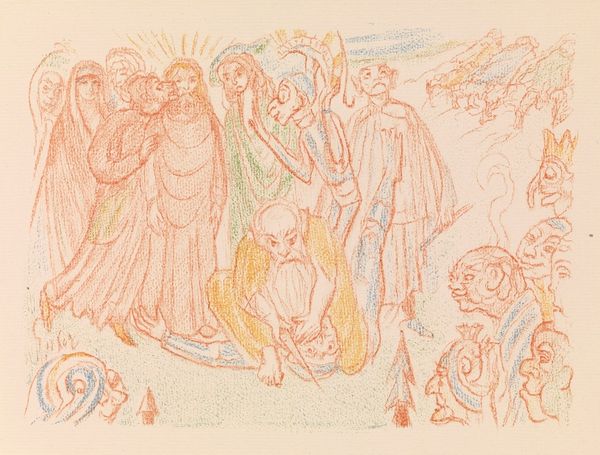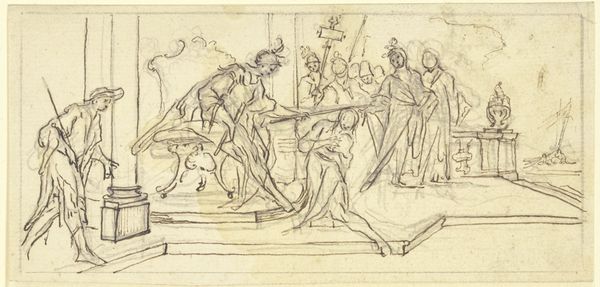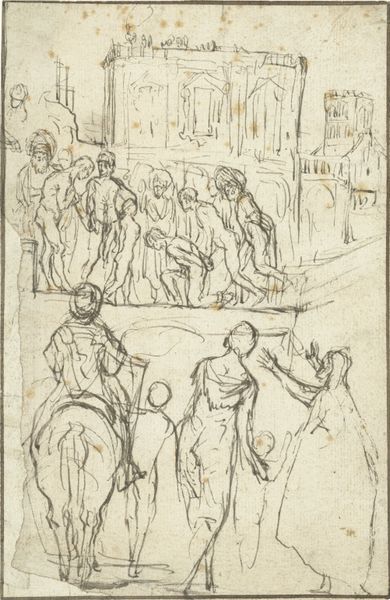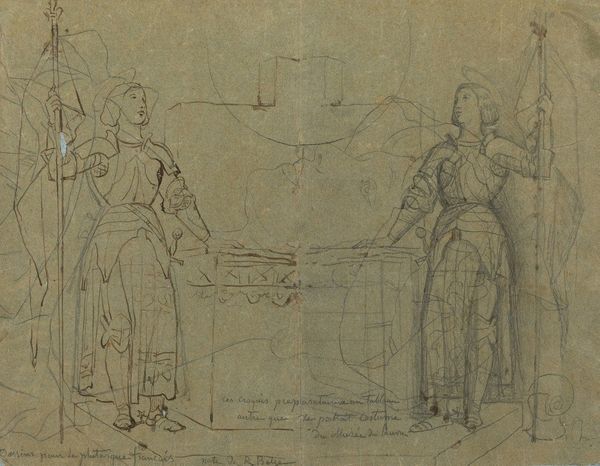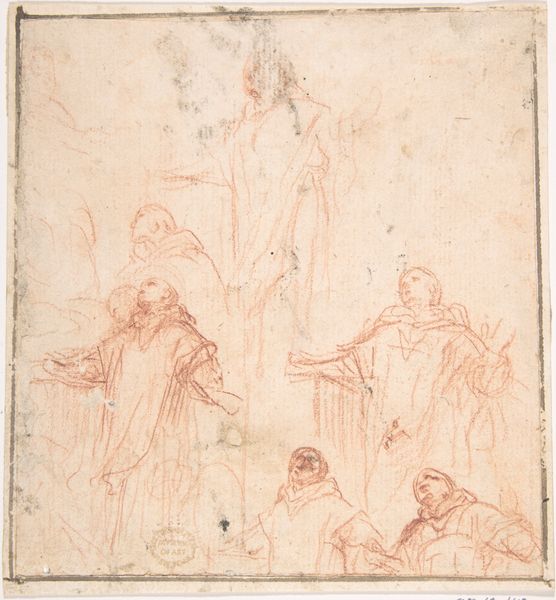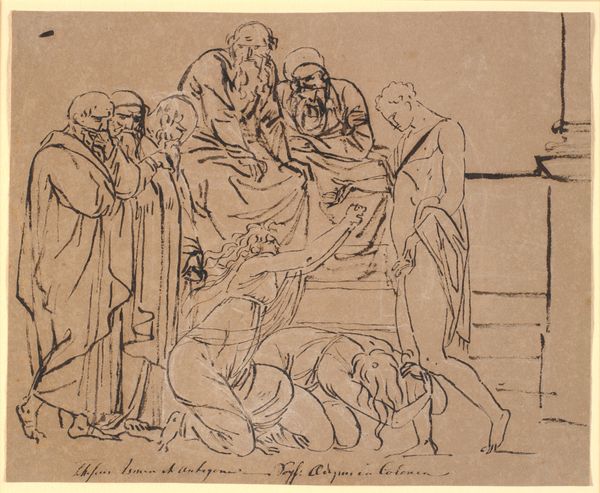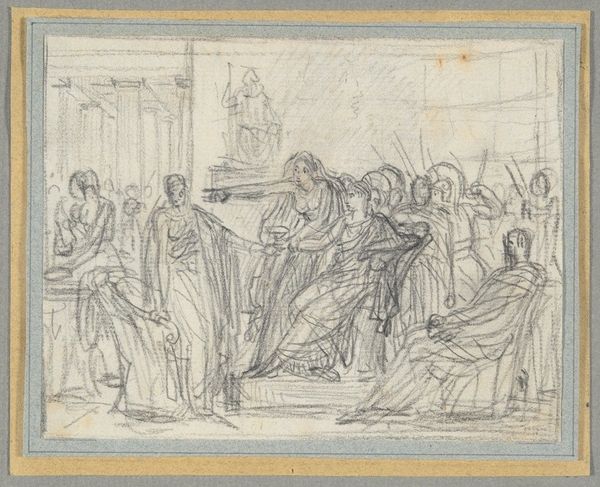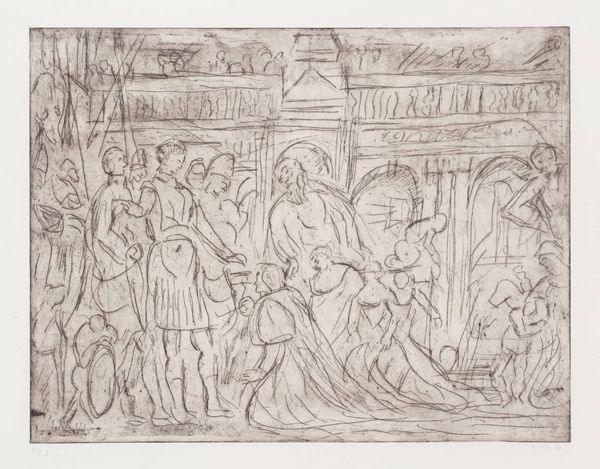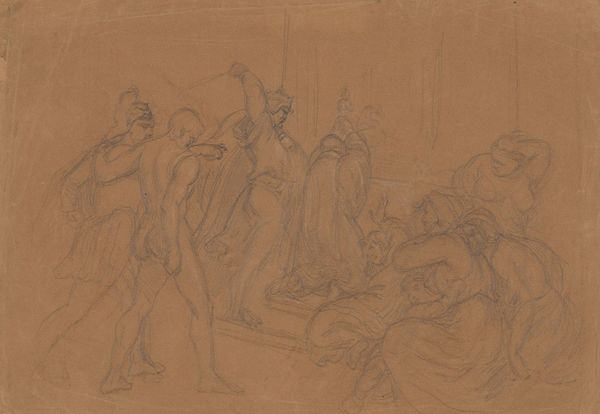
drawing, pencil
#
drawing
#
figuration
#
pencil
#
line
#
history-painting
#
academic-art
Copyright: Public Domain: Artvee
Curator: Well, let's turn our attention to this intriguing drawing by Pierre Puvis de Chavannes, entitled "Etude pour la dernière composition du Panthéon non exécutée," or "Study for the Last Unexecuted Composition of the Pantheon". It's a pencil drawing, giving it a certain immediacy and rawness. Editor: It definitely feels raw. The unfinished nature lends a ghostly quality to the figures, almost like peering into a memory. The scale, even in this sketch, suggests a monumental presence. Curator: Exactly! Consider this: it was intended for the Pantheon, a site of national significance, implying it was meant to be consumed and read by many as a symbol of France. It embodies elements of Academic art with its careful study of form. Do you feel it is more line or shape oriented? Editor: Definitely line, that’s what creates a skeletal, diagrammatic quality. The use of line establishes both form and volume while creating a muted palette across the sepia page. But considering the period, Academic Art can reflect both, correct? How do we see production manifesting here, in its relation to process, labor, or even consumption? Curator: Excellent point! Considering its state as an "etude," we glimpse the artist's labor directly. It gives insight into Puvis de Chavannes' artistic method and production line— his working-class models' roles, and choices for what symbols needed rendering when—making visible the otherwise concealed production behind a grand academic artwork. Editor: The way these figures are positioned and interact—the central grouping and process—almost resembles a frieze. One might argue they signify particular class structures, or reflect social hierarchies between figures such as royalty or proletariat peoples of industry. What does the scale say? Curator: Precisely. Its purpose isn’t only aesthetic; rather, it documents stages in producing a finalized piece as well. Think also about who "consumed" artwork like these academic drawings, besides patrons for artistic practice. It hints also to broader cultural aspirations or debates of the period. Editor: I see what you mean. What begins to take shape is also Puvis de Chavannes' own visual language which, thanks to line work, produces what’s unfinished. Curator: And leaves the viewer wondering about the final statement!
Comments
No comments
Be the first to comment and join the conversation on the ultimate creative platform.

